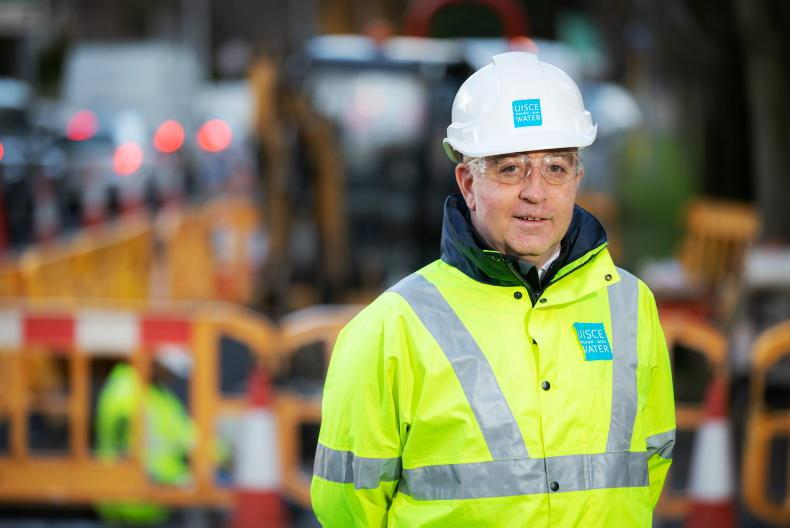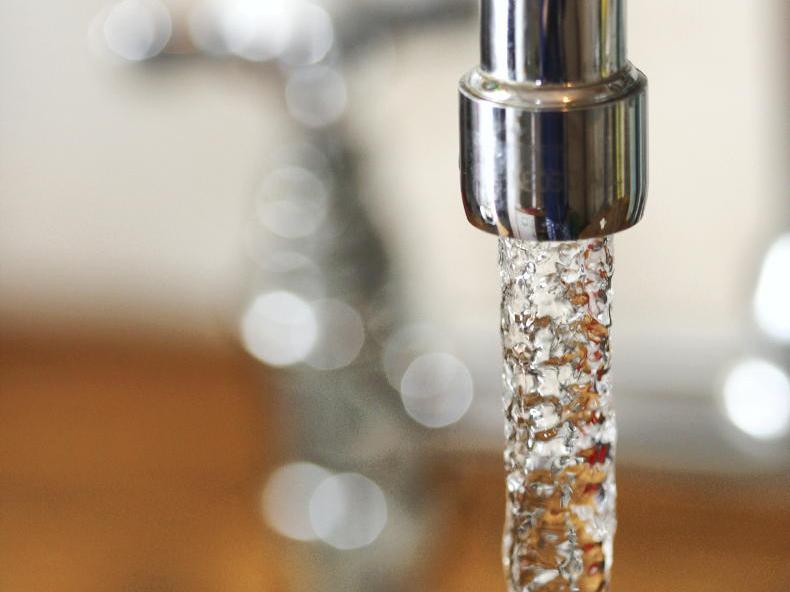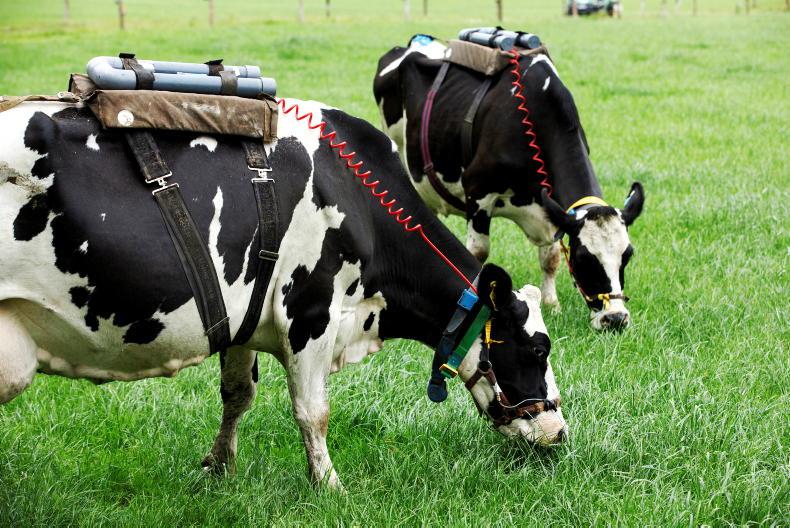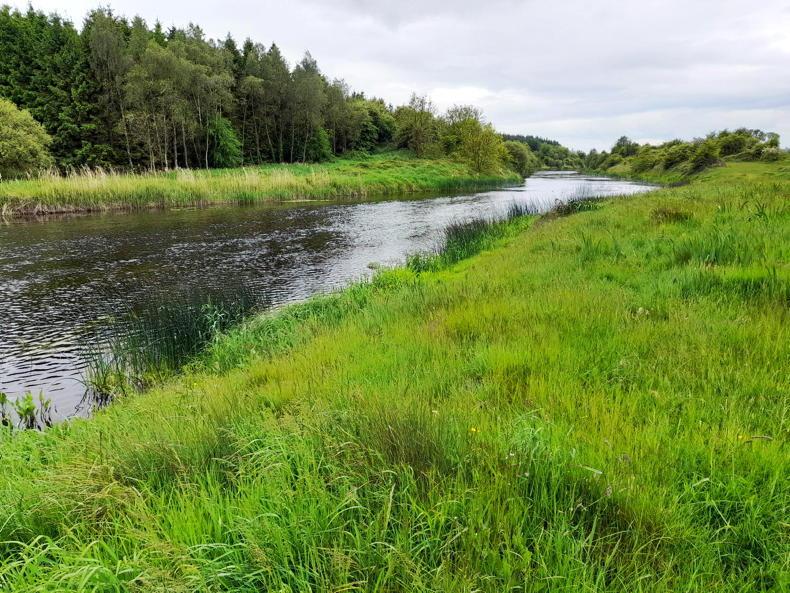The latest International Governmental Panel on Climate Change (IPCC) report isn’t fun or easy reading. It stresses how little has been done in regards to meeting our goal of limiting the world to a 1.5°C temperature increase by 2030.
That said, its tone isn’t anti-agriculture. It indicates that, while changes to our food system must be made, climate mitigation is increasingly important in order to save global agriculture.
“Global food supply increased dramatically in the last century, but ongoing climate change has begun to slow that growth, reducing the gains that would have been expected without climate change,” it states in chapter five (Food, Fibre and other Ecosystem Products).
One of the areas mentioned in the report of grave concern, concerning agriculture, is water access and supply. In chapter three (Freshwater Resources and their Management), it states, with high confidence: “All IPCC regions show an overall net negative impact of climate change on water resources and freshwater ecosystems.”
Water issues everywhere
This means it doesn’t matter where in the world you live; with climate change there will be greater variability with rainfall, so we might see an increase in flooding – or more frequent drought and water loss; both of which have occurred in Ireland in recent years.
An Fóram Uisce (AFU) is a statutory body which represents stakeholders in Irish water issues. It also informs policy on water issues in Ireland. Its 25 members include rural and agricultural representatives from Macra na Feirme, the Irish Farmers’ Association (IFA) and the Irish Creamery Milk Suppliers Association (ICMSA) and Irish Co-Operative Organisation Society (ICOS).
Recently, AFU commissioned research on, “A Framework for Improving Domestic Water Conservation”. Irish Country Living spoke with Dr Sarah Cotterill, a lecturer at University College Dublin’s (UCD) School of Civil Engineering, and AFU representatives Dr Gretta McCarron (education and communications lead) and Dr Triona McGrath (research lead) to learn more about the issues facing Irish water conservation.

Dr Sarah Cotterill teaches at UCD's School of Civil Engineering and conducted An Fóram Uisce's latest research.
New research
The research, conducted by Dr Cotterill, suggests there are barriers to addressing excessive water usage in Ireland, based on the assumption that we experience high rainfall year-round.
“If you start to look regionally, the east receives 40% less rainfall than the west – and yet most people are located on the east of Ireland,” she explains.
“Many of Ireland’s water resource zones are already in a supply-demand deficit. Whilst there are lots of factors that affect this, we’re already starting to see frequent restrictions on water use, and it’s predicted to get worse.”
Triona adds that climate change with water conservation are deeply intertwined and increasing public awareness on this is crucial.
“People don’t realise the amount of work it takes for water to get to our taps – and then we use it for washing cars or for washing windows,” she says.
“We must think about the energy it takes to pump and treat water before it gets to your home – that’s a behaviour change [we need to make].”
We use too much water
The report states that, on average, Irish people use 133l of water each day. It also indicates that, by being just a bit more careful with water usage, we could create positive climate outcomes. For example, if we collectively reduced water consumption by 20%, we could save hundreds of thousands of tonnes in greenhouse gases per year.
“Most people have no idea how much water they are using,” Dr Cotterill says. “Compared to gas and electricity, the variability connected to water is much larger.”
Technologies like smart water monitoring systems exist, but can be costly. There are also rainwater collection tanks, which can be installed to help offset reliance on clean, potable (drinkable) water for things like outdoor use or flushing toilets. But not everyone is in the position to make these changes. Dr Cotterill agrees that if we’re not measuring water use, it’s difficult to make changes, but smart meters can certainly help.
The report says that those who do use smart monitoring systems use, on average, 20% less water than others. The report led to 10 recommendations for future policy, which include introducing smart metering, including water in building energy rating (BER) ratings on homes, updating building regulations and, most importantly, rethinking water education to support a bottom-up understanding of water.
The thing about leakage
Part of this education involves increasing citizens’ faith in Irish Water as they tackle an ageing water infrastructure and leakage. To date, they have brought leakage down from 48% (see Irish Water’s response for their full statement). Triona says, at times, individuals seem unwilling to make changes because, from their perspective, Irish Water allows treated water go to waste through these leaks.
“Some people might think [leakage is] Irish Water’s fault,” she says. “But they didn’t break the pipes – they took on a very broken infrastructure. We need to communicate that.”
Sarah agrees that leakage is only part of the problem.
“While our leakage rates are high, the targets for the next decade would bring it to a level consistent with what you would see across much of Europe,” she notes. “It’s actually much easier to make behavioural changes and, collectively, make large savings while leakage is being addressed.”
Farmers can do their bit
Between livestock needing drinking water, milking parlours getting hosed down and equipment needing rinsing and sanitisation, Irish farms go through a lot of water each day. Agricultural run-off also affects nearby bodies of water. Gretta says incentives for farmers to save rainwater or recycle greywater would be a huge step forward.
“Farmers pay for their water – many are part of group water schemes – but then they end up using expensively treated, good-quality drinking water to wash down their parlours; that’s such a waste.
“It would be great if farmers could get incentives to put in rainwater harvesting on their sheds. That water could be used for cleaning parlours, sheds and yards, especially in regions where water levels are low during the summer.”
She says by incorporating rainwater tanks, farmers collectively have the ability to “slow the flow” by harvesting rainfall, which can reduce flooding in other areas and possibly reduce costs, as well. Such tanks generally don’t require any planning permission to install and grants are available under the TAMS grant (the current tranche deadline for applications is 8 April).
Irish Water on its National
Leakage Reduction Plan
Irish Country Living asked Irish Water about the leakage issue from its perspective. Paul Grey, Irish Water’s leakage reduction portfolio manager, responded saying Ireland’s public water network has suffered from decades of under-investment.

Paul Grey is Irish Water's leakage reduction portfolio manager. \ Naoise Culhane
“By the end of 2021, we had reduced leakage to 38%,” he says. “This is a saving of over 166m litres of drinking water – or enough to fill 66 Olympic-size swimming pools – every day. We plan to reduce the national leakage rate further, to 32% by the end of 2024, through investing an additional €600m in that period as part of the National Leakage Reduction Programme.
Fixing leaks can be complicated
“As part of this programme we have dedicated teams working with Local Authorities across the country to fix on average 2,000 leaks per month,” he continues. “Fixing leaks can be complicated. We have over 63,000km of water pipes underground in Ireland – enough to circle the earth one and a half times. Every day 1.7bn litres of water is distributed through the network, parts of which – particularly in urban areas – are over a century old. Most leaks happen underground and aren’t visible, resulting in precious water being lost. The Leakage Reduction Programme takes a strategic and targeted approach to improve the water network across the country, prioritising investment where it is needed most.”
Some top tips for home water conservation
Take a shower instead of a bath.“If it’s yellow, let it mellow” – you don’t have to flush every single time!In the garden, use a watering can instead of a hose (extra points if you use stored rainwater to water your plants!)Keep a jug of tap water in the fridge to keep it cold instead of running the tap until the water is cold enough to drink.Avoid watering the lawn – even if it’s looking yellow, it will recover!Install a leak sensor, if you can, and always fix dripping taps right away.Use a dishwasher instead of washing dishes by hand, if you can – but always make sure the dishwasher (or laundry machine) is full before turning it on.
The latest International Governmental Panel on Climate Change (IPCC) report isn’t fun or easy reading. It stresses how little has been done in regards to meeting our goal of limiting the world to a 1.5°C temperature increase by 2030.
That said, its tone isn’t anti-agriculture. It indicates that, while changes to our food system must be made, climate mitigation is increasingly important in order to save global agriculture.
“Global food supply increased dramatically in the last century, but ongoing climate change has begun to slow that growth, reducing the gains that would have been expected without climate change,” it states in chapter five (Food, Fibre and other Ecosystem Products).
One of the areas mentioned in the report of grave concern, concerning agriculture, is water access and supply. In chapter three (Freshwater Resources and their Management), it states, with high confidence: “All IPCC regions show an overall net negative impact of climate change on water resources and freshwater ecosystems.”
Water issues everywhere
This means it doesn’t matter where in the world you live; with climate change there will be greater variability with rainfall, so we might see an increase in flooding – or more frequent drought and water loss; both of which have occurred in Ireland in recent years.
An Fóram Uisce (AFU) is a statutory body which represents stakeholders in Irish water issues. It also informs policy on water issues in Ireland. Its 25 members include rural and agricultural representatives from Macra na Feirme, the Irish Farmers’ Association (IFA) and the Irish Creamery Milk Suppliers Association (ICMSA) and Irish Co-Operative Organisation Society (ICOS).
Recently, AFU commissioned research on, “A Framework for Improving Domestic Water Conservation”. Irish Country Living spoke with Dr Sarah Cotterill, a lecturer at University College Dublin’s (UCD) School of Civil Engineering, and AFU representatives Dr Gretta McCarron (education and communications lead) and Dr Triona McGrath (research lead) to learn more about the issues facing Irish water conservation.

Dr Sarah Cotterill teaches at UCD's School of Civil Engineering and conducted An Fóram Uisce's latest research.
New research
The research, conducted by Dr Cotterill, suggests there are barriers to addressing excessive water usage in Ireland, based on the assumption that we experience high rainfall year-round.
“If you start to look regionally, the east receives 40% less rainfall than the west – and yet most people are located on the east of Ireland,” she explains.
“Many of Ireland’s water resource zones are already in a supply-demand deficit. Whilst there are lots of factors that affect this, we’re already starting to see frequent restrictions on water use, and it’s predicted to get worse.”
Triona adds that climate change with water conservation are deeply intertwined and increasing public awareness on this is crucial.
“People don’t realise the amount of work it takes for water to get to our taps – and then we use it for washing cars or for washing windows,” she says.
“We must think about the energy it takes to pump and treat water before it gets to your home – that’s a behaviour change [we need to make].”
We use too much water
The report states that, on average, Irish people use 133l of water each day. It also indicates that, by being just a bit more careful with water usage, we could create positive climate outcomes. For example, if we collectively reduced water consumption by 20%, we could save hundreds of thousands of tonnes in greenhouse gases per year.
“Most people have no idea how much water they are using,” Dr Cotterill says. “Compared to gas and electricity, the variability connected to water is much larger.”
Technologies like smart water monitoring systems exist, but can be costly. There are also rainwater collection tanks, which can be installed to help offset reliance on clean, potable (drinkable) water for things like outdoor use or flushing toilets. But not everyone is in the position to make these changes. Dr Cotterill agrees that if we’re not measuring water use, it’s difficult to make changes, but smart meters can certainly help.
The report says that those who do use smart monitoring systems use, on average, 20% less water than others. The report led to 10 recommendations for future policy, which include introducing smart metering, including water in building energy rating (BER) ratings on homes, updating building regulations and, most importantly, rethinking water education to support a bottom-up understanding of water.
The thing about leakage
Part of this education involves increasing citizens’ faith in Irish Water as they tackle an ageing water infrastructure and leakage. To date, they have brought leakage down from 48% (see Irish Water’s response for their full statement). Triona says, at times, individuals seem unwilling to make changes because, from their perspective, Irish Water allows treated water go to waste through these leaks.
“Some people might think [leakage is] Irish Water’s fault,” she says. “But they didn’t break the pipes – they took on a very broken infrastructure. We need to communicate that.”
Sarah agrees that leakage is only part of the problem.
“While our leakage rates are high, the targets for the next decade would bring it to a level consistent with what you would see across much of Europe,” she notes. “It’s actually much easier to make behavioural changes and, collectively, make large savings while leakage is being addressed.”
Farmers can do their bit
Between livestock needing drinking water, milking parlours getting hosed down and equipment needing rinsing and sanitisation, Irish farms go through a lot of water each day. Agricultural run-off also affects nearby bodies of water. Gretta says incentives for farmers to save rainwater or recycle greywater would be a huge step forward.
“Farmers pay for their water – many are part of group water schemes – but then they end up using expensively treated, good-quality drinking water to wash down their parlours; that’s such a waste.
“It would be great if farmers could get incentives to put in rainwater harvesting on their sheds. That water could be used for cleaning parlours, sheds and yards, especially in regions where water levels are low during the summer.”
She says by incorporating rainwater tanks, farmers collectively have the ability to “slow the flow” by harvesting rainfall, which can reduce flooding in other areas and possibly reduce costs, as well. Such tanks generally don’t require any planning permission to install and grants are available under the TAMS grant (the current tranche deadline for applications is 8 April).
Irish Water on its National
Leakage Reduction Plan
Irish Country Living asked Irish Water about the leakage issue from its perspective. Paul Grey, Irish Water’s leakage reduction portfolio manager, responded saying Ireland’s public water network has suffered from decades of under-investment.

Paul Grey is Irish Water's leakage reduction portfolio manager. \ Naoise Culhane
“By the end of 2021, we had reduced leakage to 38%,” he says. “This is a saving of over 166m litres of drinking water – or enough to fill 66 Olympic-size swimming pools – every day. We plan to reduce the national leakage rate further, to 32% by the end of 2024, through investing an additional €600m in that period as part of the National Leakage Reduction Programme.
Fixing leaks can be complicated
“As part of this programme we have dedicated teams working with Local Authorities across the country to fix on average 2,000 leaks per month,” he continues. “Fixing leaks can be complicated. We have over 63,000km of water pipes underground in Ireland – enough to circle the earth one and a half times. Every day 1.7bn litres of water is distributed through the network, parts of which – particularly in urban areas – are over a century old. Most leaks happen underground and aren’t visible, resulting in precious water being lost. The Leakage Reduction Programme takes a strategic and targeted approach to improve the water network across the country, prioritising investment where it is needed most.”
Some top tips for home water conservation
Take a shower instead of a bath.“If it’s yellow, let it mellow” – you don’t have to flush every single time!In the garden, use a watering can instead of a hose (extra points if you use stored rainwater to water your plants!)Keep a jug of tap water in the fridge to keep it cold instead of running the tap until the water is cold enough to drink.Avoid watering the lawn – even if it’s looking yellow, it will recover!Install a leak sensor, if you can, and always fix dripping taps right away.Use a dishwasher instead of washing dishes by hand, if you can – but always make sure the dishwasher (or laundry machine) is full before turning it on.












SHARING OPTIONS